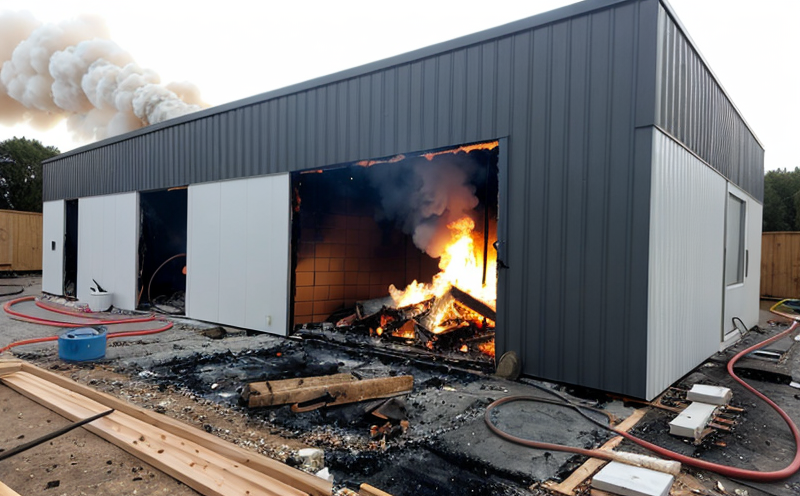EN ISO 13785-1 Reaction-to-Fire of Insulation Materials
The EN ISO 13785-1 standard addresses the reaction-to-fire properties of insulation materials used in building construction. This test is critical for ensuring that materials perform safely and effectively when exposed to fire, thereby protecting lives and property.
Insulation materials are often installed within walls or other structural cavities, where they play a crucial role in maintaining energy efficiency while providing structural integrity. However, these same properties can contribute to the spread of fire if not properly tested and certified. The test described by EN ISO 13785-1 provides a standardized approach to evaluate how insulation materials behave under fire conditions.
The test involves subjecting specimens of the material to controlled burns in a specially designed furnace. The behavior of the material is observed, including heat release rates, smoke production, and flame spread characteristics. These parameters are critical for understanding the potential fire risk posed by the material, especially when installed in environments where they may be exposed to flames.
The results from this test inform designers, architects, and builders about whether a particular insulation material is suitable for use in specific applications. This information can influence decisions regarding building design, code compliance, and ultimately, public safety.
EN ISO 13785-1 is widely used across the construction industry, particularly in regions that adhere to European standards. Its application helps ensure consistency in testing procedures and results, which is essential for international trade and collaboration.
The test is performed using a carefully controlled environment to simulate real-world fire scenarios. Specimens are prepared according to specified dimensions and conditions, ensuring that the test is as relevant as possible to actual field performance. The use of this standard helps maintain high safety standards in construction projects worldwide.
Scope and Methodology
| Parameter | Description |
|---|---|
| Test Specimen | The test specimen must be a representative sample of the insulation material to be tested. Dimensions and preparation are specified in EN ISO 13785-1. |
| Test Furnace | A specially designed furnace is used to simulate fire conditions. The furnace must meet strict specifications outlined in the standard. |
| Ignition Source | The ignition source for the test must be a flame, typically produced by a gas burner or other approved method. |
| Data Collection | Various data points are collected during and after the test, including heat release rates, smoke production indices, and flame spread characteristics. These metrics provide insight into the material's behavior under fire conditions. |
Why Choose This Test
- Compliance with international standards: EN ISO 13785-1 ensures that your products meet the highest safety and quality requirements.
- Increased marketability: By obtaining this certification, you can demonstrate to customers that your products are safe and reliable.
- Potential for regulatory compliance: Many jurisdictions require materials used in construction to pass this test before being approved for use.
- Improved product performance: Understanding how your material behaves under fire conditions allows for continuous improvement of the product.
International Acceptance and Recognition
- EN ISO 13785-1 is recognized by numerous countries, including those in Europe, North America, and Asia.
- The test results are widely accepted by regulatory bodies around the world, ensuring a consistent approach to fire safety standards.





